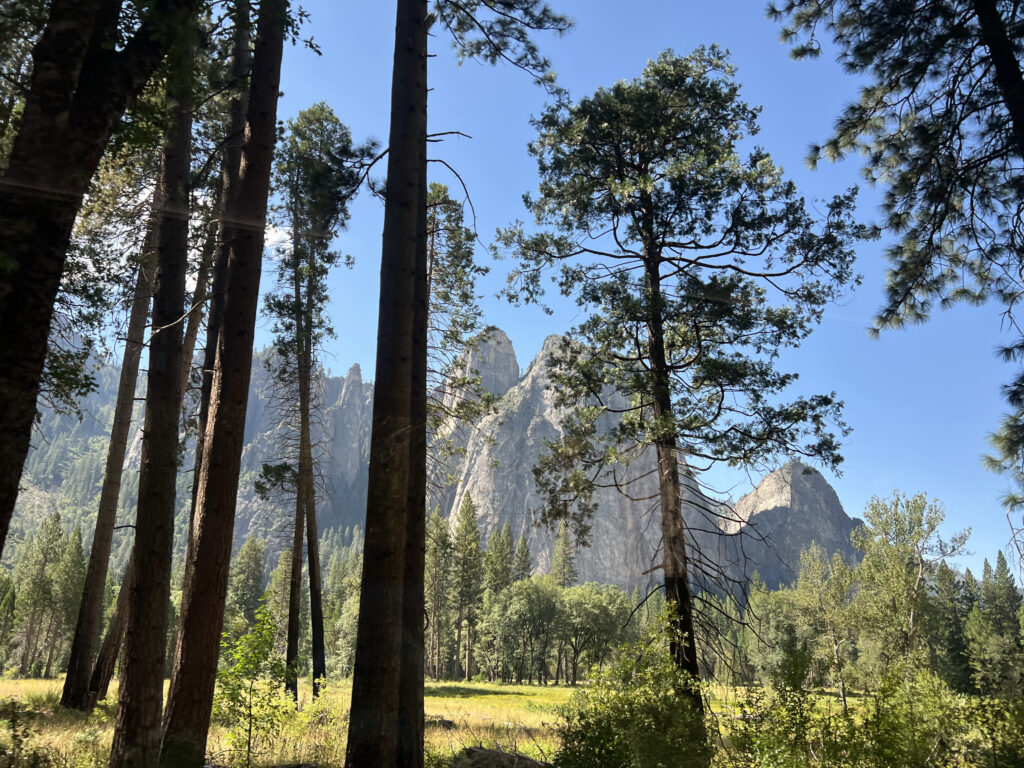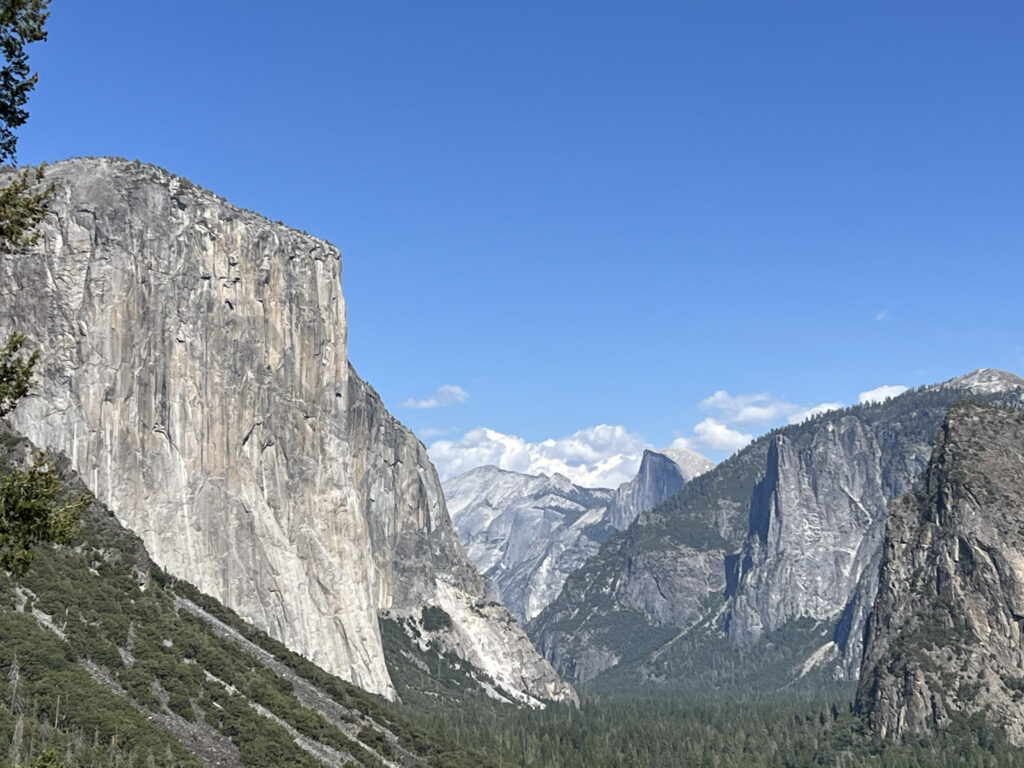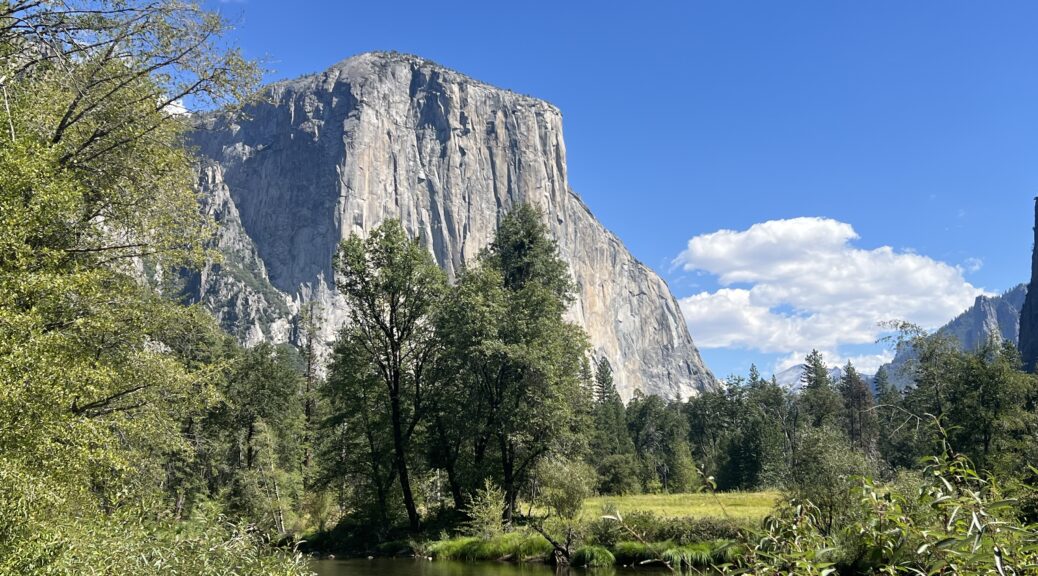
Yosemite National Park
After leaving Sequoia National Park, we went to Yosemite National Park and stayed on the property at The Ahwahnee. The hotel was commissioned in the 1920’s in the hope of drawing affluent visitors to Yosemite. It was felt that affluent and influential visitors would encourage continued support of Yosemite as a national park. The Ahwahnee was named a National Historical Site in 1987.
The Ahwahnee was positioned close to cliffs with a goal of making it “part of the scene rather than a foreign object within it.” Its location provides beautiful views of Yosemite’s rock formations, cliffs and waterfalls.
Although modern materials were used, the hotel has a rustic look. The wood siding is actually concrete made to look like redwood. The stone columns hide reinforced steel and concrete that serve as the structural support for the building. More than 5,000 tons of stone, 1,000 tons of steel, and 30,000 feet of lumber were used in the hotel’s construction. The stone and steel helped to make the Ahwahnee fire-resistant.
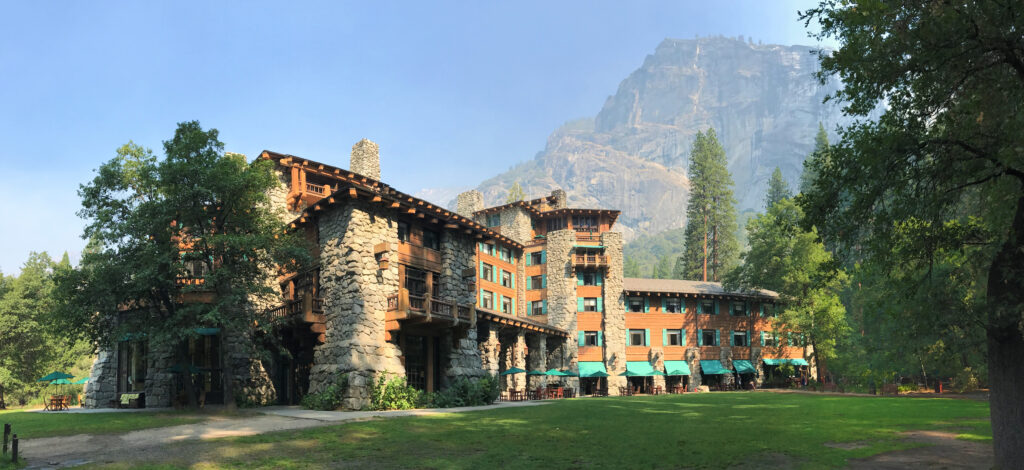
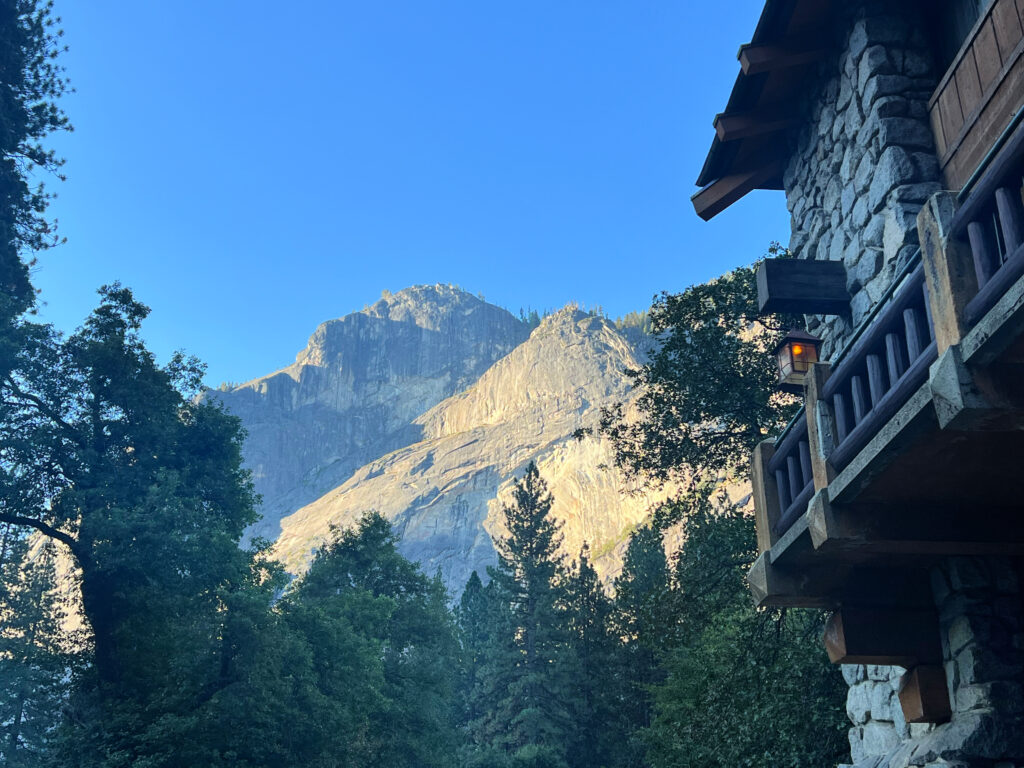
This is the Grand Lounge at the Ahwahnee. The individuals responsible for the interior design wanted to transform the building into a work of art. And looking at the beautiful Grand Lounge, it seems they achieved their goal.
The Grand Lounge is 77 feet long, 51 feet wide with 24-foot-high ceilings. Ten floor-to-ceiling windows topped with original, stained glass panels bring in light and let those inside gaze on the beauty outside. Wrought-iron chandeliers provide warm light in the evenings.
Painted stencils decorate the rafters in the lounge. The artist made over 100 different patterns. The stenciled designs can be found throughout the hotel, including in guest rooms above the transoms.
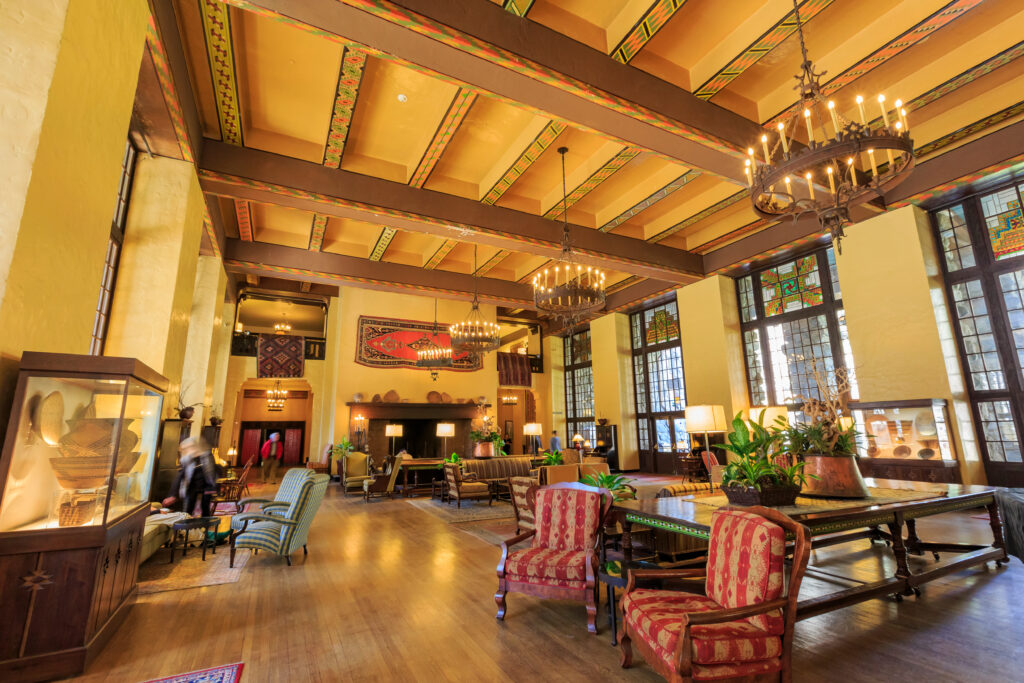
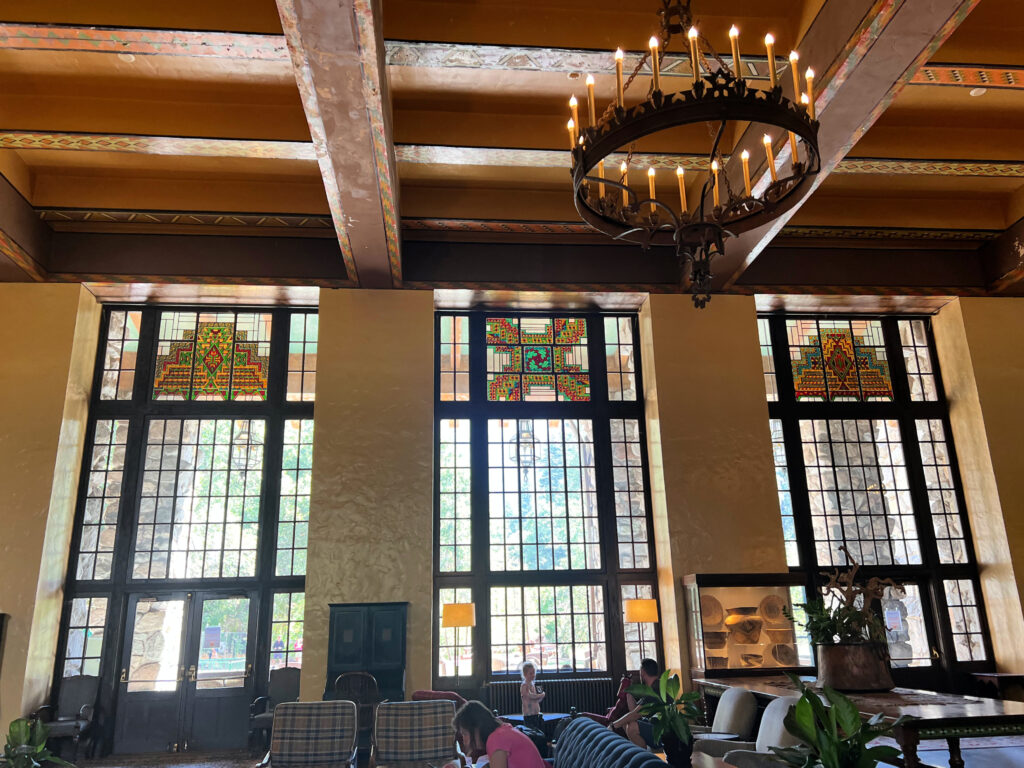
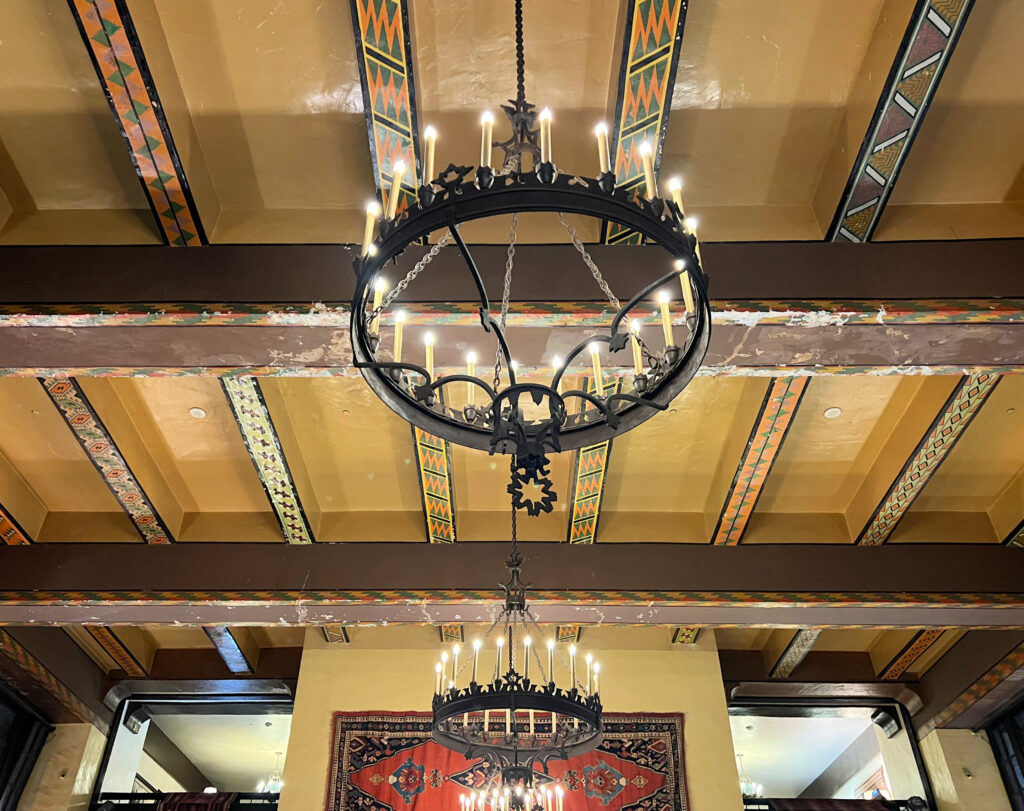
The Ahwahnee Dining Room was closed for renovation during our visit, but we could eat in the solarium, also a beautiful room. It has five floor-to-ceiling windows. On another night, we had dinner and wine with the couple we were traveling with outside on the patio. We were even joined by an unusual bird – at least for us – a stellar jay. To have the beautiful views of Yosemite as we ate was a special experience.
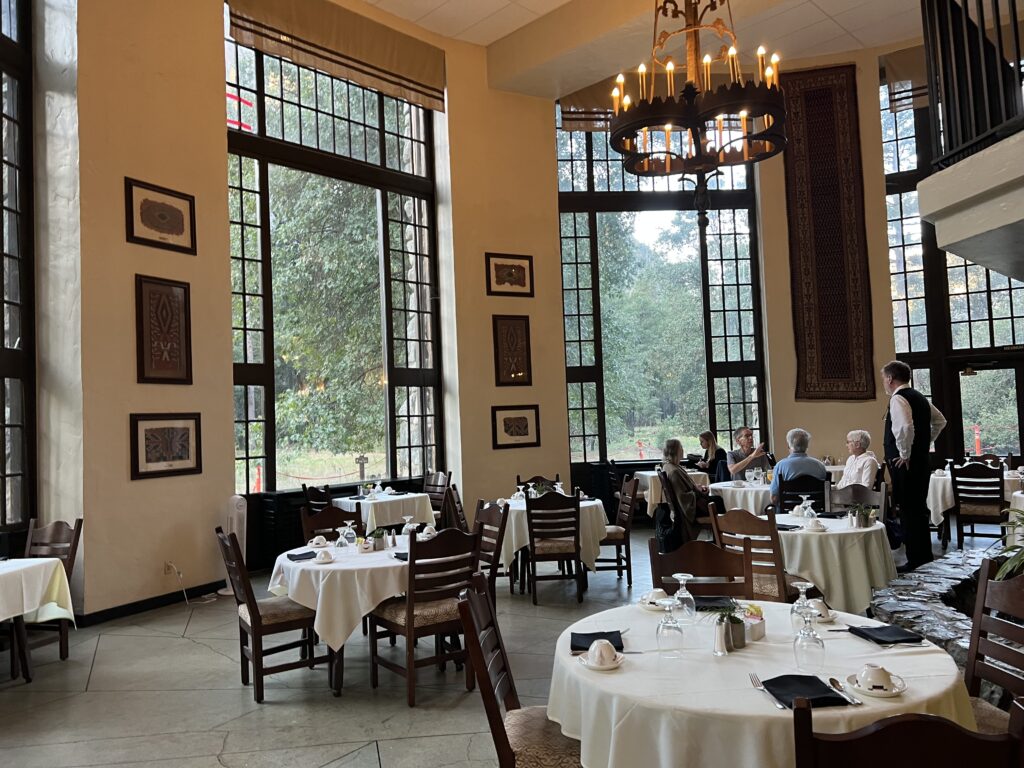
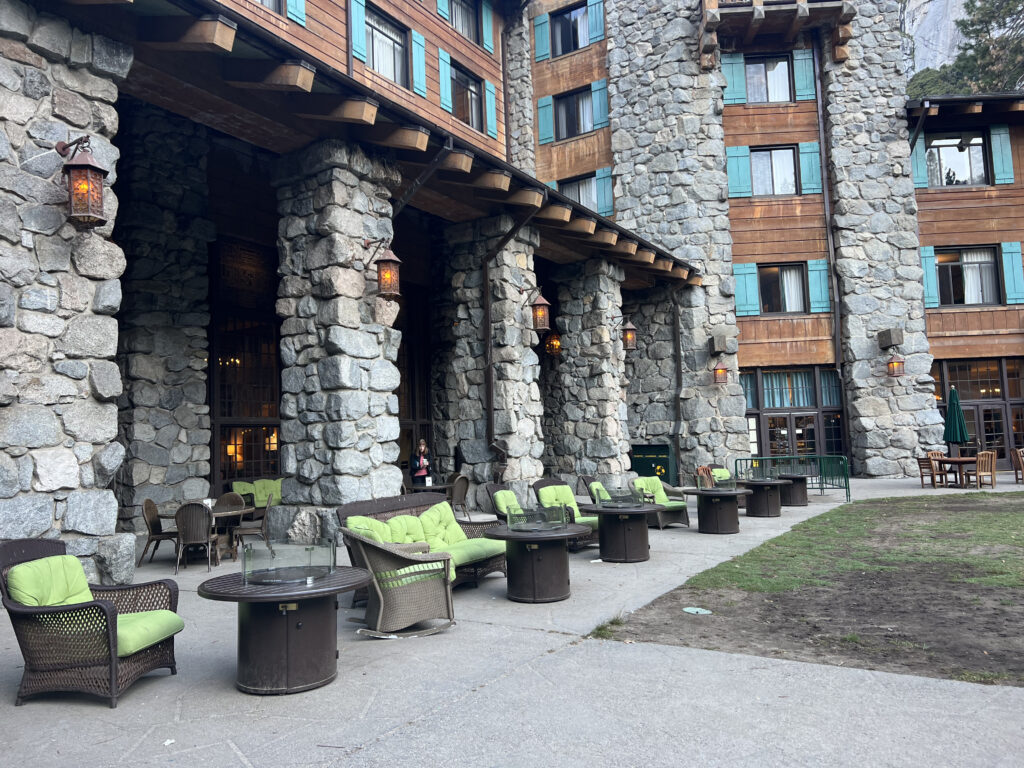
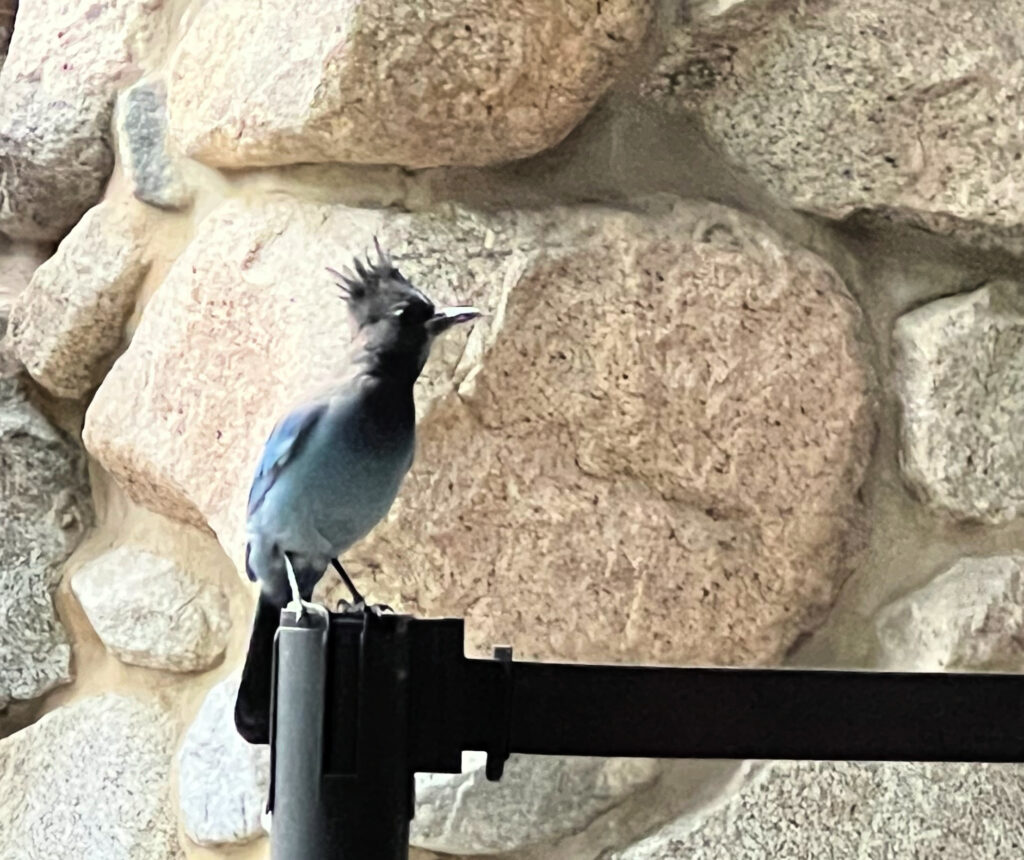
Tauck guests were provided with a unique presentation about John Muir just outside the Ahwahnee with Yosemite cliffs in the background. John Stetson, an actor, historian and author, assumed the role of John Muir. He didn’t “play the part,” but seemed to assume John Muir’s being. He answered many questions while never leaving character. He was also the voice of John Muir in Ken Burns’ television program, “National Parks: America’s Best Idea.” I found an interesting story about how Stetson got his start at Yosemite:
“As Stetson tells it, back in 1982, when he was 42 years old, he was living and working in L.A. as an actor when he visited Yosemite National Park for the first time. He arrived on a full moonlit evening in April, 1982. He hiked up to Columbia Point that evening and took in Yosemite Valley at sunrise.
“He said he then rushed back down to the Valley to apply for any job he could. He spent the next seven months working as a desk clerk (I was probably the worst desk clerk they ever had, he joked) and spending his free time in the Parks research library.
“What came out of this time was a one-man theatrical performance which has been running for 40 consecutive years and has been seen by more than a quarter million visitors.”
https://thesheetnews.com/2015/03/05/the-spirit-of-muir/
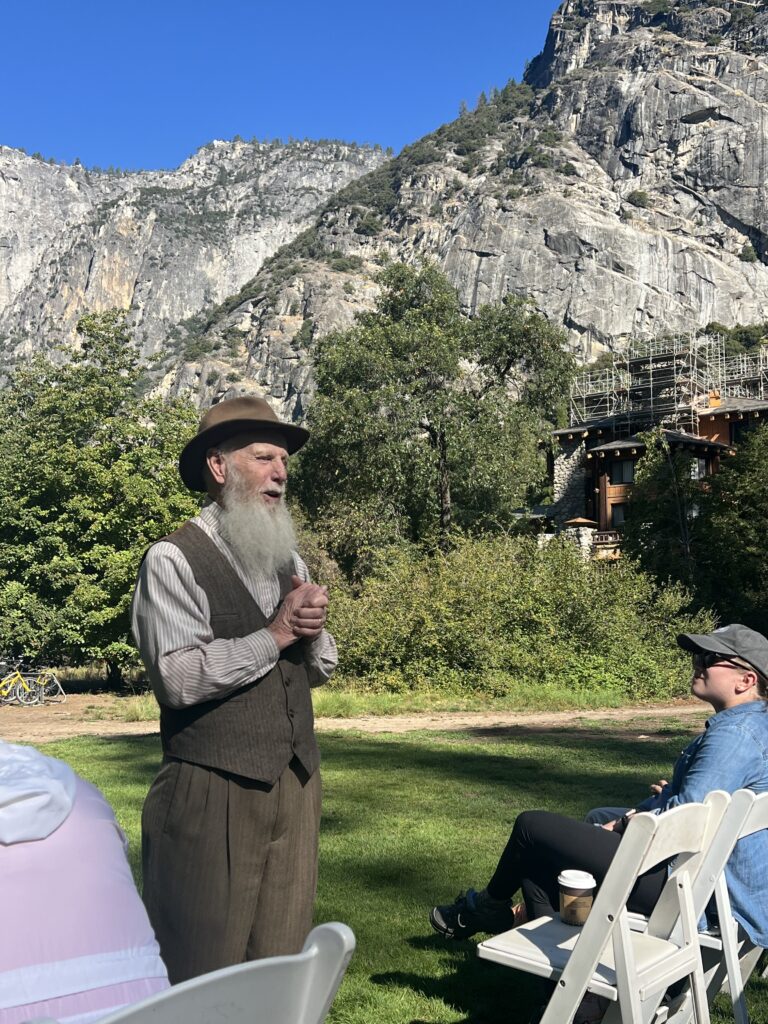
We walked along a trail behind the Ahwahnee and saw these beautiful views.
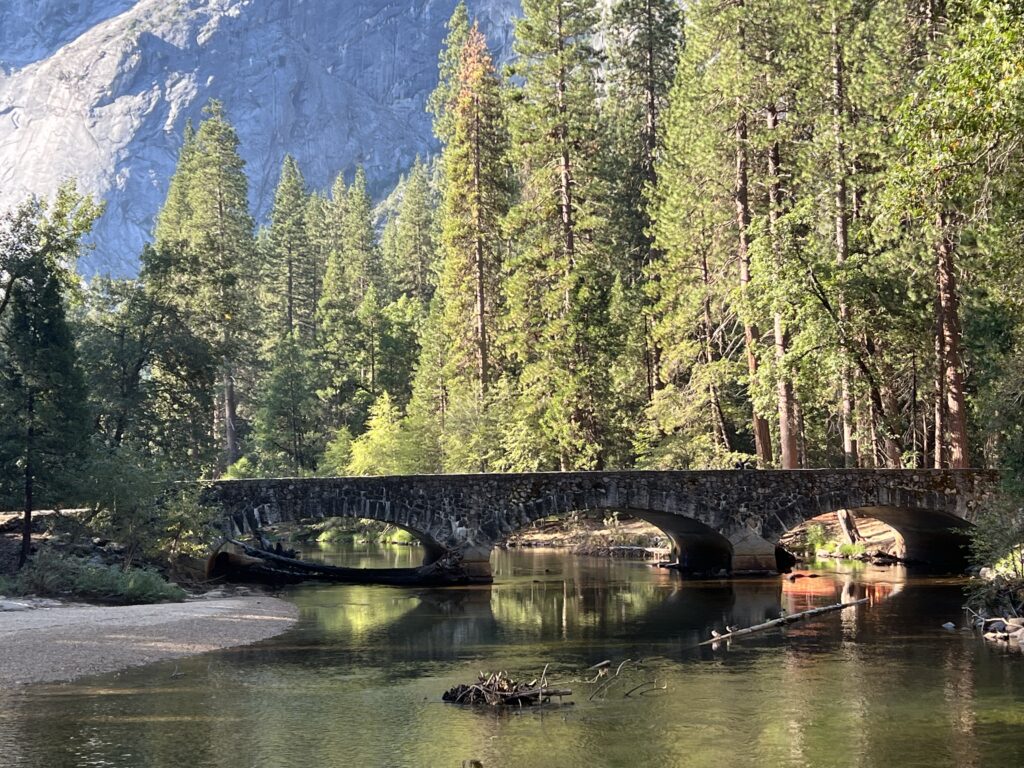
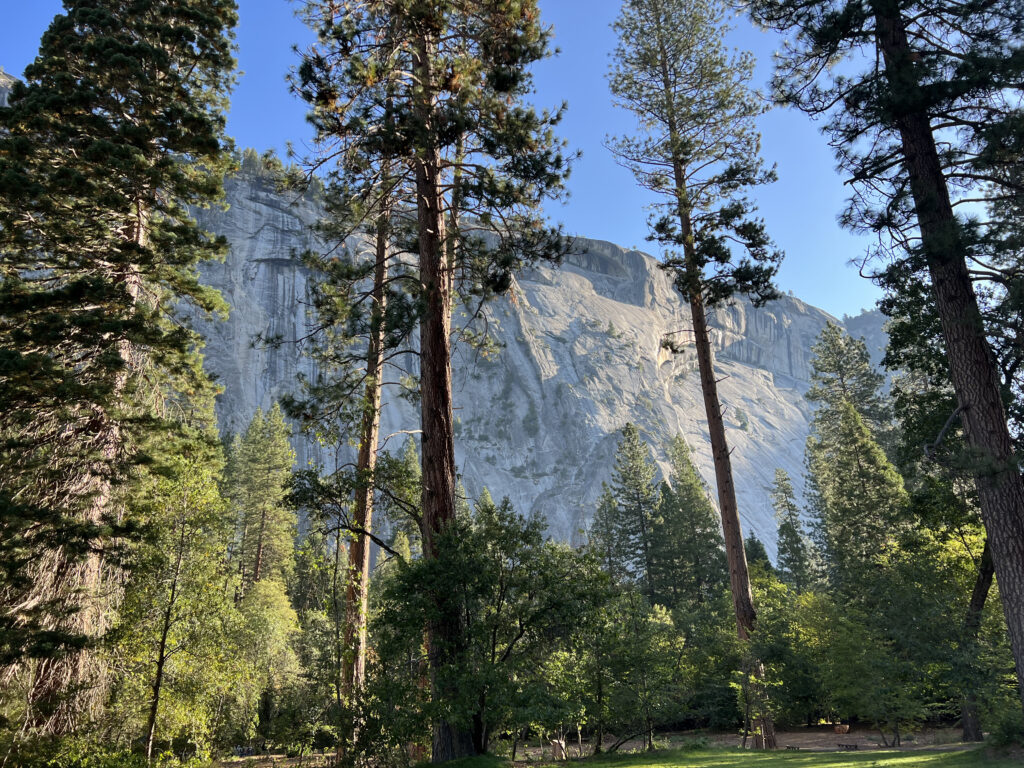
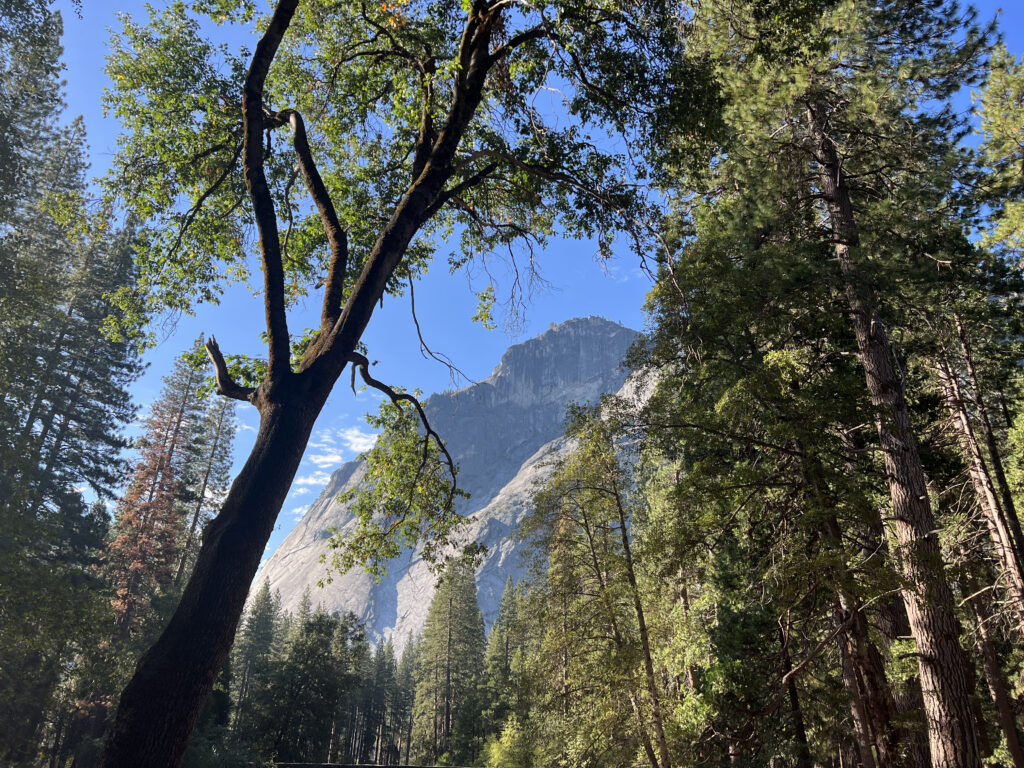
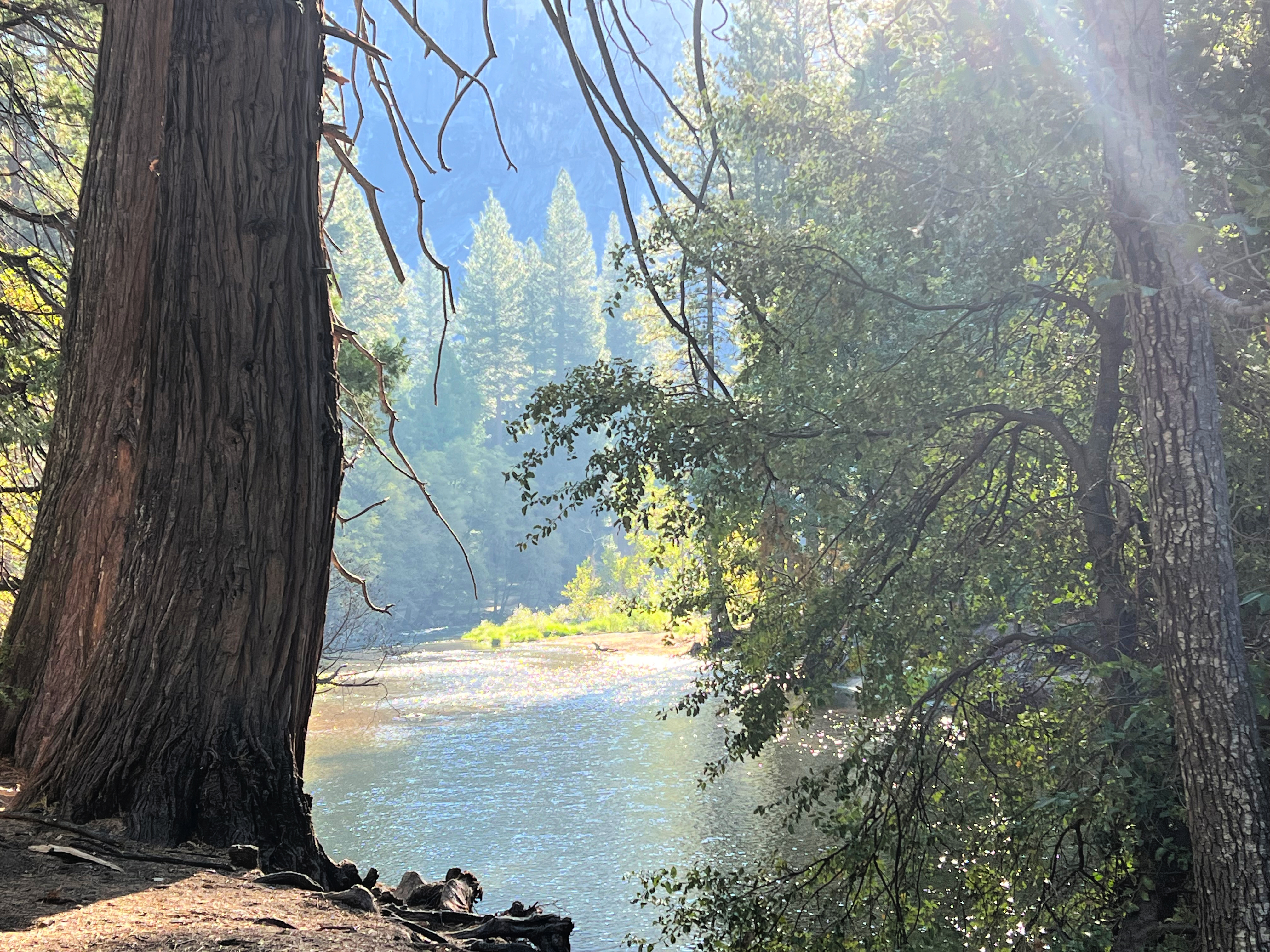
The pictures below are of Yosemite Valley. Rivers and glaciers carved 3,000 feet into solid granite to create the valley and the spectacular rock formations for which Yosemite Valley is famous. This is a description of Yosemite Valley from National Geographic:
Stretching nearly eight miles from east to west and with granite walls more than twice the height of the Empire State Building, Yosemite Valley is one of the wonders of the natural world. Carved by glacial dynamics and weathering and erosion spanning 30 million years, few other places reflect in such remarkable fashion the geological forces that have shaped our planet.
https://www.nationalgeographic.com/travel/national-parks/article/yosemite-national-park
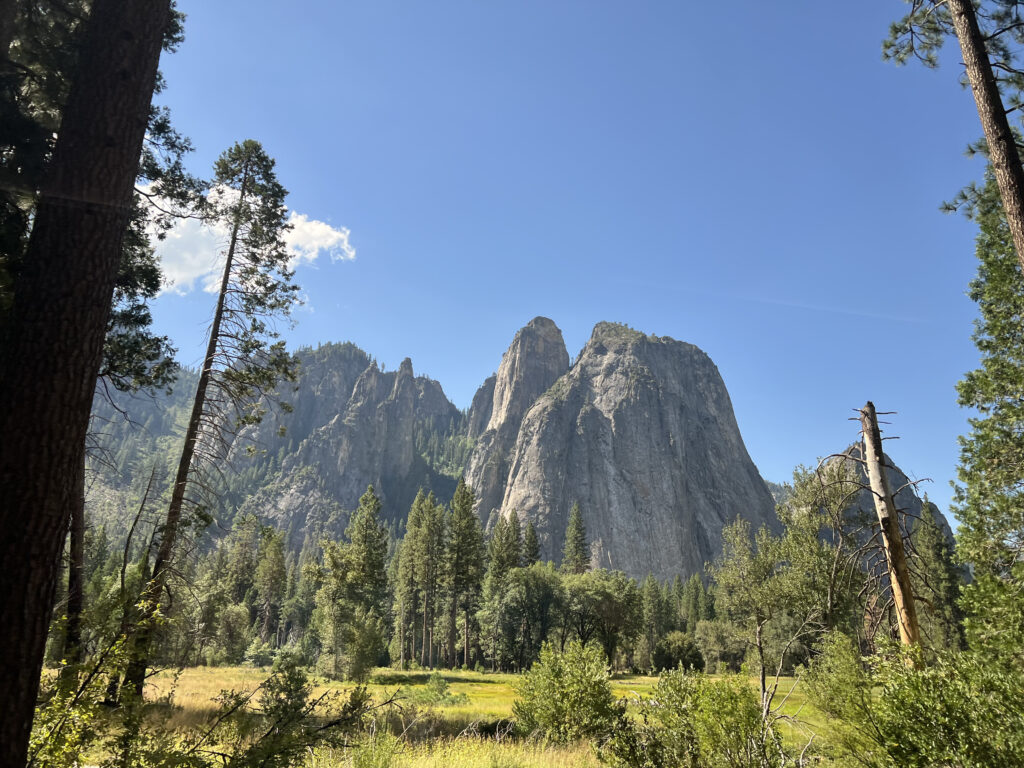
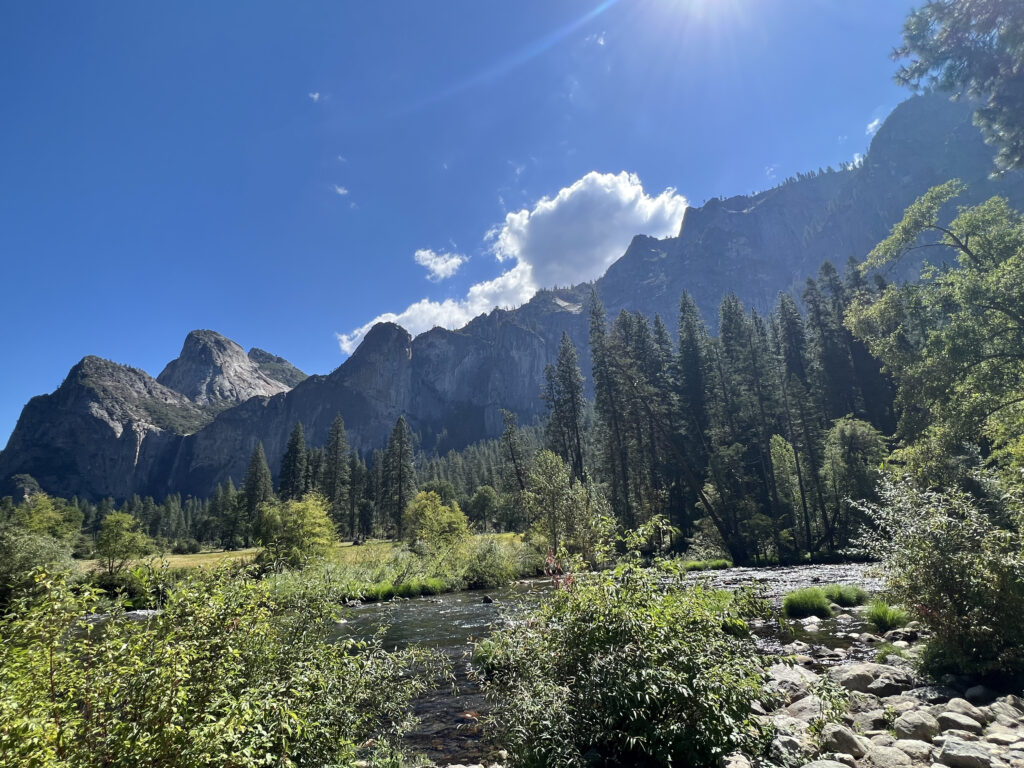
Next are pictures of two of the most famous rock formations at Yosemite. The first is Half Dome. Rising nearly 5,000 feet above the Valley floor, it is a well-known rock formation in the park, named for its distinct shape. One side is a sheer face while the other three sides are smooth and round, making it appear like a dome cut in half.
The second is El Capitan. It rises over 3,000 feet above the floor of Yosemite Valley, and is a favorite for experienced rock climbers. The name “El Capitan” is a loose Spanish translation of the local Native American name for the cliff, Tutokanula or “Rock Chief.”
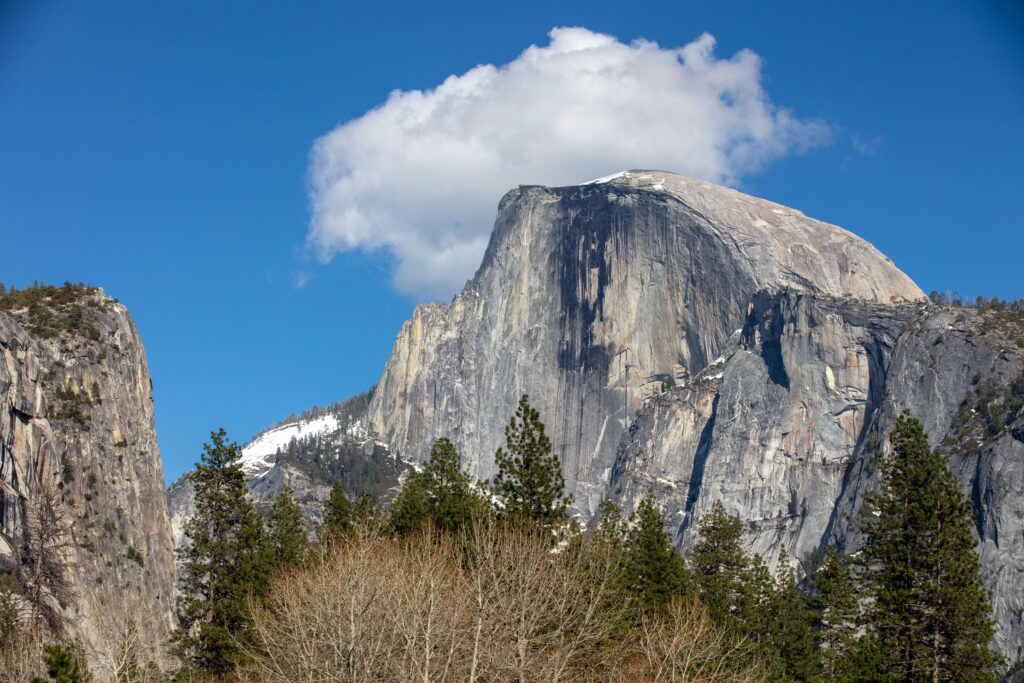
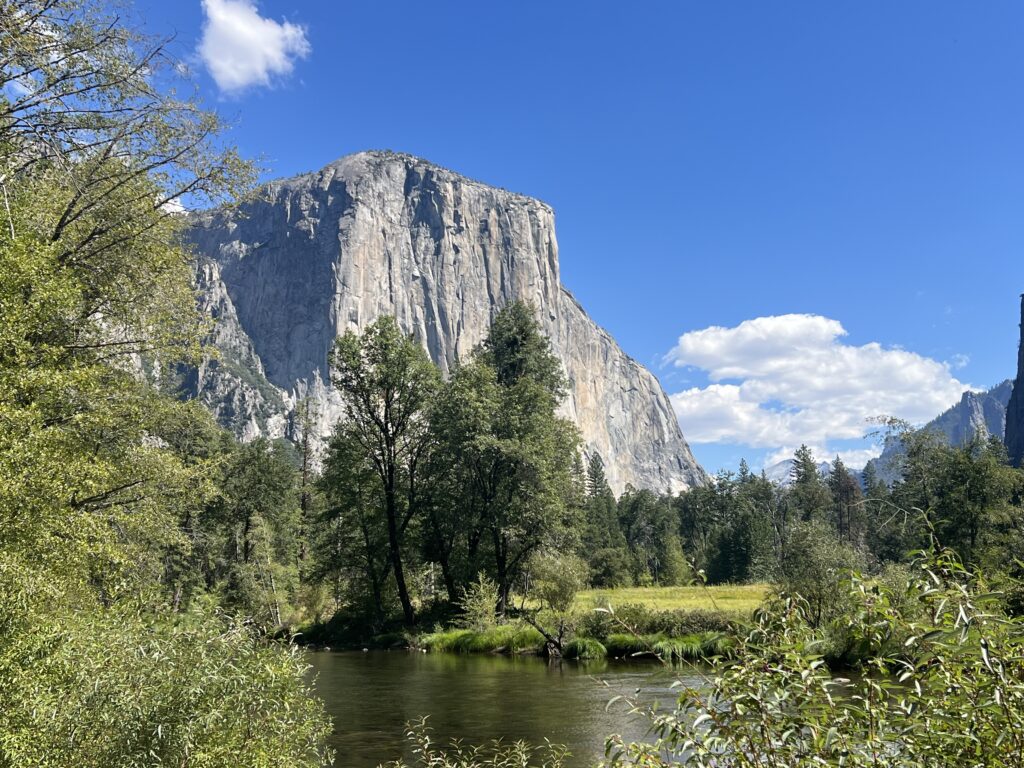
We hiked a short distance to see if we could find rock climbers on El Capitan. With the help of our guide, we were able to find two. They are marked with arrows.
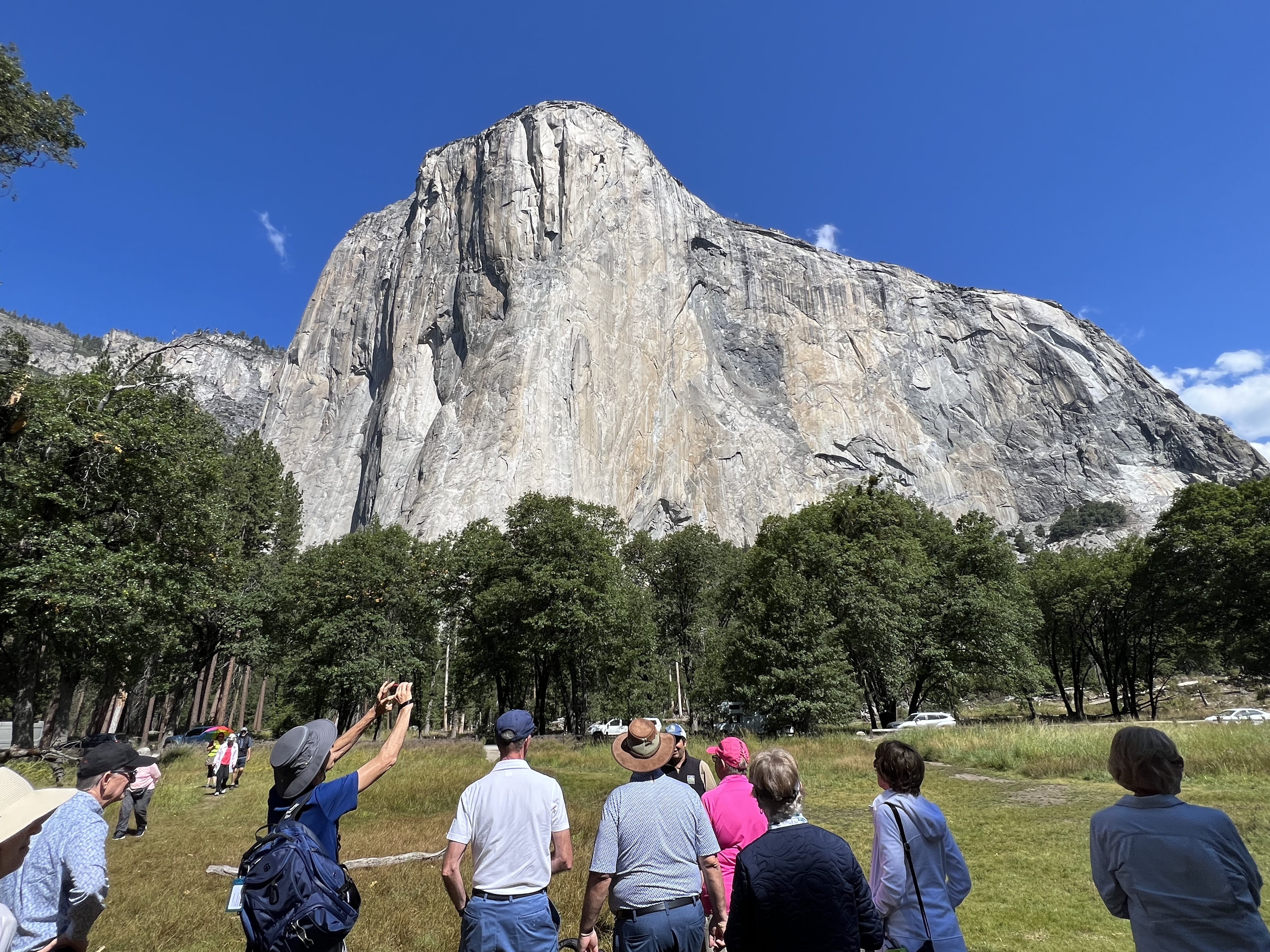
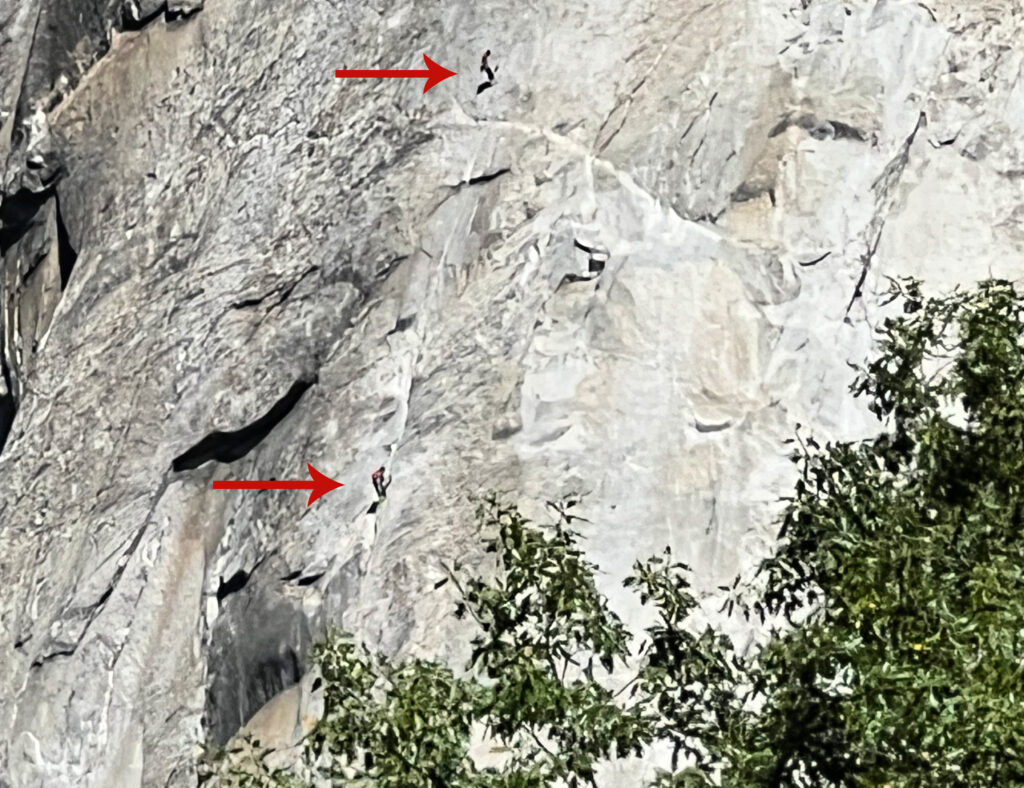
These are two of the waterfalls we saw at Yosemite. The first one pictured is Bridalveil Falls. The waterfall is 620 feet high and is one of the few waterfalls in the park that flows year-round.
The next is Yosemite Falls, one of the world’s tallest. It is actually made up of three separate falls: Upper Yosemite Fall (1,430 feet), the middle cascades (675 feet), and Lower Yosemite Fall (320 feet). The picture we took is of the Upper Falls. It generally flows from November to July. Because of heavier rains this year, we were fortunate to see it during our September visit.
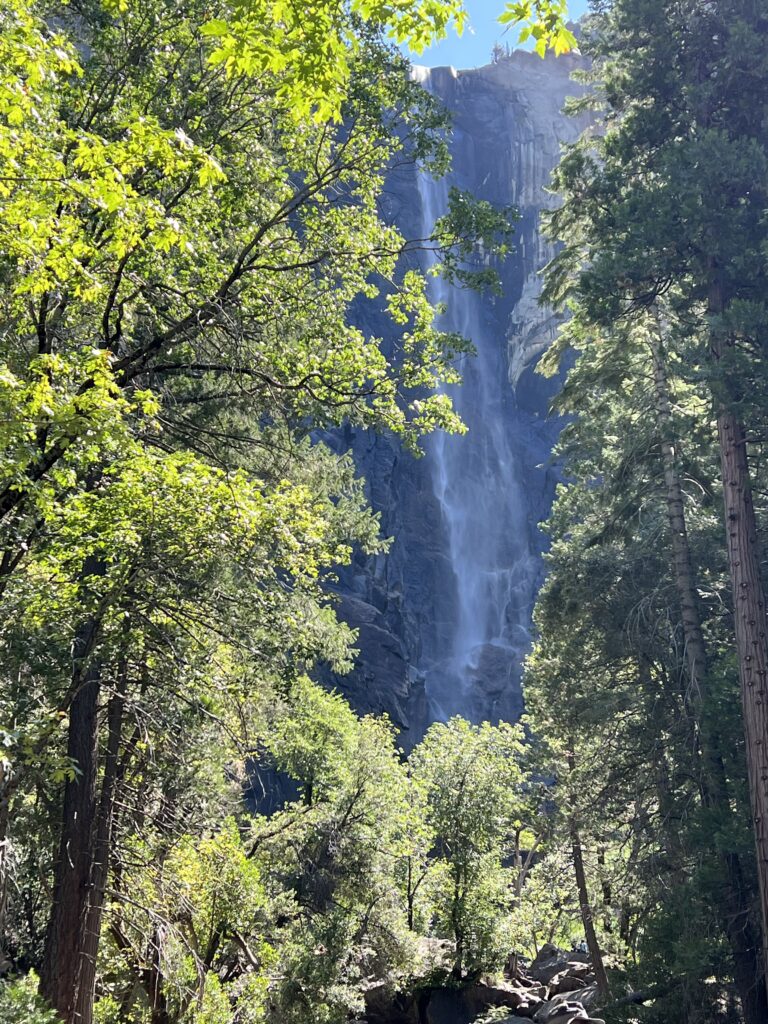
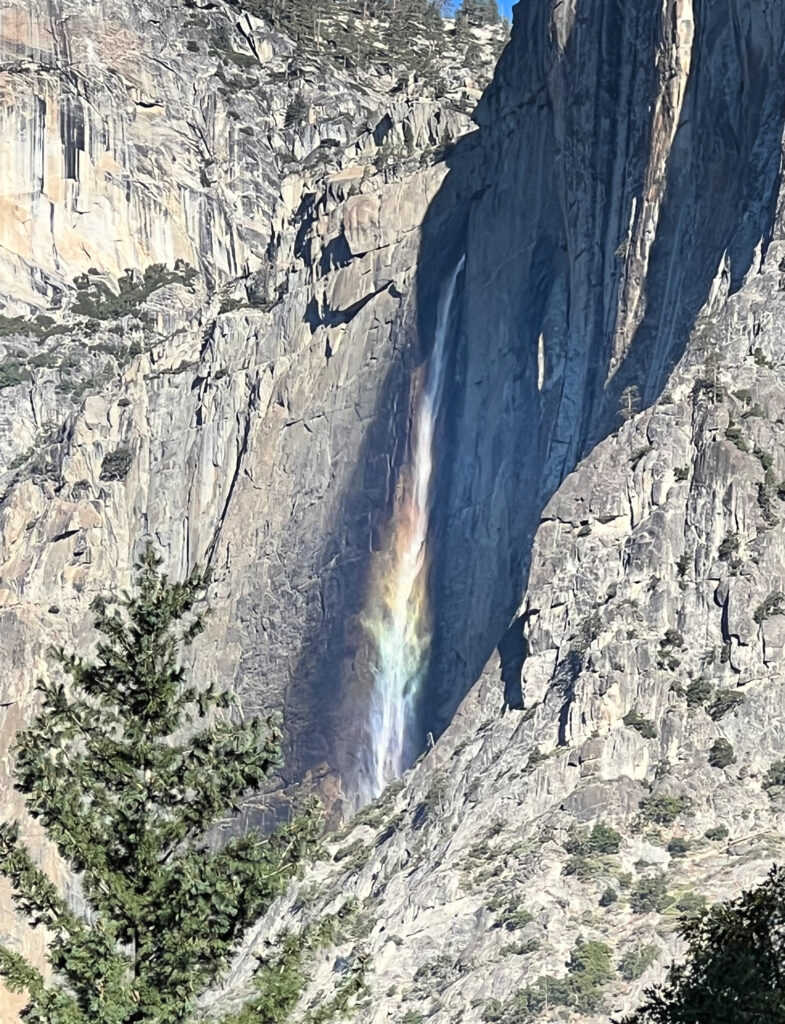
Here are just a few more pictures from Yosemite. It was a wonderful trip!
